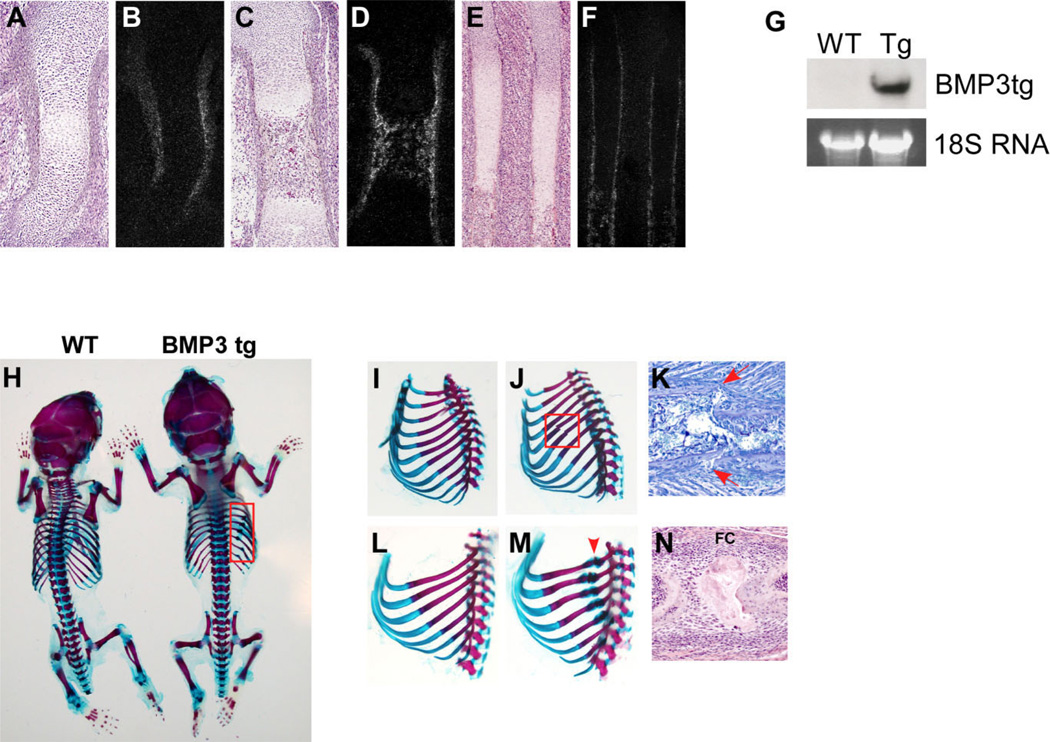Fig. 1.
Bone morphogenetic protein-3 (BMP3) transgenic mice have spontaneous rib fractures. A–F: Radioactive in situ hybridization for BMP3 in long bones and ribs of embryonic day (E) 14.5 and E16.5 embryos. A,B: In the E14.5 humerus, BMP3 localizes to the perichondrium outlining the forming bone. C,D: In the E16.5 femur, BMP3 is detected in the inner layer of the periosteum and is also expressed by newly differentiated osteoblasts in the center of the bone. E,F: In E16.5 ribs, BMP3 is strongly expressed in the periosteum and by osteoblasts. BMP3 is also found in the perichondrium in a restricted area that surrounds the hypertrophic chondrocytes and part of the prehypertrophic chondrocyte zone. G: RNA was extracted from pooled long bones of 2 week old wild-type (WT) and BMP3 transgenic (Tg) mice and hybridized with a probe specific for the human BMP3 transgene (BMP3tg). The 18S rRNA band was used as a loading control. H: Alizarin Red and Alcian Blue staining of whole skeletons from newborn wild-type and BMP3 transgenic mice. No obvious skeletal patterning or development differences are detected but BMP3 transgenic mice display multiple spontaneous rib fractures (boxed area). I–N: Whole-mount ribs from E17.0 and Newborn mice stained with Alizarin Red and Alcian Blue. I: E17.0 wild-type ribs do not have any breaks. J: The E17.0 ribs from BMP3 transgenic mice have two fractures (boxed area). K: Toluidine blue stained rib from E17.5 BMP3 transgenic animal showing new fracture (arrows). L: Ribs from newborn wild-type mice appear normal and have no breaks. M: Ribs from newborn BMP3 transgenic animals display healing fractures (arrowhead points to healing breaks with fracture calluses) in most of the ribs. N: Hematoxylin and eosin stained rib from a newborn BMP3 transgenic animal showing the healing fracture and fracture callus (FC).

